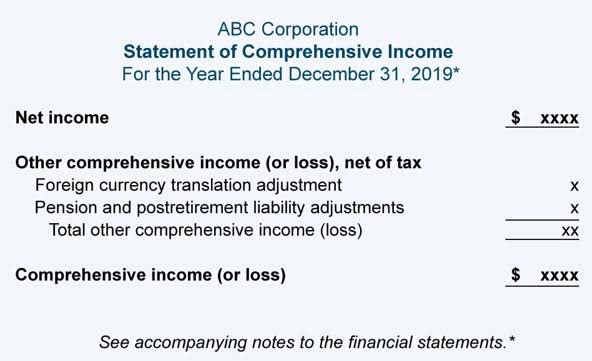Content

The examples above and below show only one column of differences between periods, but by showing differences for each year waterfall chart becomes quite a powerful tool for difference analysis deep dives. Not very good for detailed comparisons across several years or for trend analysis, smaller differences doesn’t pop up. Choosing the right profit and loss statement chart is similar to taking a picture of something to share with others. You have to make some choices about what is the purpose of your photo, what you want to focus on, and with whom you want to share it.

In general, an analysis of Financial Statements is vital for a person running a business. Because this analysis tells these business owners where they stand in their financial environment. The return on assets ratio serves as a metric for determining the asset performance of an organization. Accounting AccountEdge Pro AccountEdge Pro has all the accounting features a growing business needs, combining the reliability of a desktop application with the flexibility of a mobile app for those needing on-the-go access. If you’re a laptop person you may need to hold down the FN key and then press the f4 function key but you don’t want to make it absolute. What you want to do is stop right there B dollar sign 6 – that’s called a mixed reference. Rosemary Carlson is an expert in finance who writes for The Balance Small Business.
Such an analysis helps in evaluating the changes in the working capital and fixed assets over time. Investigating these changes could help an analyst know if the company is shifting to a different business model.
Understanding The Income Statement
When you look at the bubbles in the chart above, it shows from top to button the biggest drivers of expenses changes vs. the previous year. Not very good for detailed comparisons across several years or for P&L trend analysis.

Horizontal analysis is a common technique used to examine the changes in the line items of the income statement and the balance sheet from year to year. Horizontal Analysis is undertaken to ascertain how the company performed over the years or what is its financial status, as compared to the prior period. As against, vertical analysis is used to report the stakeholder about the portion of line items to the total, in the current financial year. The vertical analysis of a balance sheet results in every balance sheet amount being restated as a percent of total assets. It’s almost impossible to tell which is growing faster by just looking at the numbers.
Vertical Analysis For An Income Statement
The main benefit of showing revenues and expenses together is to show the difference between them. By showing expenses as negatives values, the difference is not visually comparable, which is the reason why the net income line is being added to this chart with an unfulfilled intention to “fix” this issue. Above, you can see the area chart applied to two different splits of revenue. For example, for visualizing expenses, I prefer to show it as % of revenue, which gives me the added benefit of seeing also operating margin as a white space at the top.
Look for These Red Flags in the Income Statement – Investopedia
Look for These Red Flags in the Income Statement.
Posted: Sat, 25 Mar 2017 10:10:38 GMT [source]
Much like ratio analysis, vertical analysis allows financial information of a small company to be compared with that of a large company. The common size percentage can also be used to compare different companies within the same industry or companies that use different currencies. Vertical analysis, also called common-size analysis, takes the Sales and looks at each line items so that you can easily compare the income statements and balance sheets. Vertical analysis on an income statement will show the sales number as 100%, and every other account will show as a percentage of the total sales number. An income statement breaks down all the revenues, expenses, gains, and losses during a certain time period. Salaries, utilities, supplies, costs of goods sold, and rent are items you find on an income statement.
Making meaningful comparisons is also hampered when a company or its competitors have widely diversified operations. In vertical analysis, each item in a financial statement is expressed as a percentage of some base item. When analyzing a balance sheet vertically, all accounts are listed as a percentage of total assets. Vertical analysis, also known as common-size analysis, is particularly useful for comparing information among companies of different sizes. Managers can also perform vertical analysis of a series of balance sheets to see how account balances change over time. Another form of financial statement analysis used in ratio analysis is horizontal analysis or trend analysis.
Balance Sheets & Vertical Analysis
If a company’s net sales were $1,000,000 they will be presented as 100% ($1,000,000 divided by $1,000,000). If interest expense is $50,000 it will be presented as 5% ($50,000 divided by $1,000,000). The restated amounts result in a common-size income statement, since it can be compared to the income statement of a competitor of any size or to the industry’s percentages. Also known as profit and loss (P&L) statements, income statements summarize vertical analysis all income and expenses over a given period, including the cumulative impact of revenue, gain, expense, and loss transactions. Income statements are often shared as quarterly and annual reports, showing financial trends and comparisons over time. It is also useful in comparing a company’s financial statement to the average trends in the industry. It would be ineffective to use actual dollar amounts while analyzing entire industries.
The percentages on a common size income statement help you compare your figures with other companies in your industry and with your own target cost structure. For example, assume other companies in your industry spend about 16 percent of revenue on advertising, and your small business aims to spend 15 percent. If your common size income statement shows advertising expense at 20 percent, this cost is too high for the period. Both forms of analysis can help you pick out trends and patterns in financial data and develop strategies. In your accounts and any growth or decline that may have occurred over set periods of time.
What is a characteristic of vertical analysis?
What is a characteristic of vertical analysis? It calculates percentages of single items to a total. It is an expression of logical relationships between items in a single period. It calculates dollar changes in statement items. It calculates changes in comparative statement items or totals.
Unlike a Sankey diagram, a waterfall chart has no issue with visualizing losses, and therefore it is great also for showing differences between periods or differences between budget and actuals. It shows both differences on item level and also how these differences add on top of each other or offset each other to get the net income. There are issues with visualization of losses or negative changes in revenues and positive changes in expenses.
They can use them externally to examine potential investments and the creditworthiness of borrowers, amongst other things. Horizontal analysis, also called time series analysis, focuses on trends and changes in numbers over time. Horizontal allows you to detect growth patterns, cyclicality, etc. and to compare these factors among different companies.
Advantage And Disadvantages Of Vertical Analysis Of Income Statement
Note that if a company has interest income, this means the company is earning interest from investments it has made (i.e., savings account and certificate of deposit). So let’s get into it, below you can find seven best charts for income statement presentation and analysis that I based on my experience and which should cover most of the situations. When looking at income statements, take note that companies can differ in methods of accounting. Some may use “first in first out” , while others could be using “last in first out” . For instance, you can compare one company’s profits to those of its competitors by looking at a number of figures that express margins, such asgross profit margin,operating profit margin, andnet profit margin.
- They often are used to compare one company to another or to compare a company to other standards, such as industry averages.
- It shows both differences on item level and also how these differences add on top of each other or offset each other to get the net income.
- If no problems exist industry-wide, one will observe a shortfall in Sales and rise in the dollar amount of Sales returns.
- The amounts from past financial statements will be restated to be a percentage of the amounts from a base year.
- By seeing the trend, which is a remarkable growth of over 100% from one year to the next, we can also see that the trend itself is not that remarkable of only 10% change from 2013 at 110% to 120% in 2014.
- Because of this, horizontal analysis is important to investors and analysts.
A useful way to analyze these financial statements is by performing both a vertical analysis and a horizontal analysis. This type of analysis allows companies of varying sizes whose dollar amounts are vastly different to be compared. Common‐size analysis expresses each line item on a single year’s financial statement as a percent of one line item, which is referred to as a base amount. The base amount for the balance sheet is usually total assets (which is the same number as total liabilities plus stockholders’ equity), and for the income statement it is usually net sales or revenues. Horizontal analysis is used in financial statement analysis to compare historical data, such as ratios or line items, over a number of accounting periods.
Horizontal Company Financial Statement Analysis
You can also see that even though I am stretching the number of categories in the chart, it still works reasonably well. The waterfall chart is probably is not the chart that I would use for presenting the income statement to the audience that is not accustomed to seeing financial reports. But for people that are used to financial reports, the waterfall chart is very familiar, because it shows data is similar grid as traditional table format of an income statement. Although a waterfall graph is good at visualizing differences, it sucks in visualizing trends for items in time.
Here highlight – I’m gonna undo one time, my bad – autofill down and then just tell it right here to fill without formatting. Now go make a percentage – there you go and once again you get rid of those. If EPS is failing to grow strongly or is shrinking, while revenue growth is strong, this is an indication of a company that is experiencing costs rising faster than the growth of revenues. As you can see, Verizon’s financial performance has been slowing down recently, with revenues failing to grow strongly over time.
- This may be a sign of a business with little to no economic moat, as those with a strong economic moat have returning customers, which leads to growing revenues, profits, and EPS.
- Ideally, revenue and EPS should be growing at 10% or more per year for 10 years, with growth improving every year.
- For the current year, they suddenly jump to say 50%, this is something that management should check.
- A vertical analysis is a process of analyzing financial statements as a percentage of a total base item.
- The information provided by this income statement format is useful not only for spotting spikes in expenses, but also for determining which expenses are so small that they may not be worthy of much management attention.
- This high percentage means most of your Assets are liquid, and it may be time to either invest that money or use it to purchase additional Plant Assets.
- In some cases, this problem of the “invisible” net income line is “creatively” solved by showing net income line charts on the secondary axis, which makes things even worse.
Thereby, achieving a goal of the budgeting process to determine the firm’s game plan. This ratio is a measure of the ability of a firm to turn Inventory into Sales. In this case, the higher the ratio, the better the business is using Inventory. Because they are turning over their Inventory without the cost of it becoming obsolete. Consider enrolling in Financial Accounting or our other online finance and accounting courses, which can teach you the key financial topics you need to understand business performance and potential. This technique may result in misleading conclusions in case there is a lack of consistency in its method of preparation. For instance, a company with net sales as the base can’t be compared with a company with gross sales as a base.
Difference Between Horizontal Analysis And Vertical Analysis
To this, additional gains were added and losses were subtracted, including $257 million in income tax. The following example shows ABC Company’s income statement over a three-year period. Applicant Tracking Choosing the best applicant tracking system is crucial to having a smooth recruitment process that saves you time and money. Appointment Scheduling Taking into consideration things such as user-friendliness and customizability, we’ve rounded up our 10 favorite appointment schedulers, fit for a variety of business needs. Business Checking Accounts Business checking accounts are an essential tool for managing company funds, but finding the right one can be a little daunting, especially with new options cropping up all the time.
What financial statement uses vertical analysis?
Vertical analysis simplifies the correlation between single items on a balance sheet. The financial statements are key to both financial modeling and accounting. and the bottom line, as they are expressed in a percentage.
This technique is one of the easiest methods for analyzing financial statements. However, given its lack of standard benchmark, this method finds limited use in the decision making of most of the companies. Similarly, in a balance sheet, every entry is made not in terms of absolute currency but as a percentage of the total assets.
You can also use vertical analysis to identify business processes with exceptionally high costs or returns and use this to make decisions about the direction in which you choose to take your business in the future. Ultimately, the way in which you apply a vertical analysis of your accounts to your business will depend on your organisational goals and targets. Common-size income statement analysis states every line item on the income statement as a percentage of sales. If you have more than one year of financial data, you can compare income statements to see your financial progress.
Using actual dollar amounts would be ineffective when analyzing an entire industry, but the common-sized percentages of the vertical analysis solve that problem and make industry comparison possible. ABC Company’s income statement and vertical analysis demonstrate the value of using common-sized financial statements to better understand the composition of a financial statement. It also shows how a vertical analysis can be very effective in understanding key trends over time. Financial statements that include vertical analysis clearly show line item percentages in a separate column.
This can help them predict which company is more likely to experience financial growth and be an attractive investment. The above vertical analysis example shows the net profit of the company where we can see the net profit in both amount and percentage. Where the income statement can be compared with previous years, and the net income can be compared where it helps to compare and understand the percentage of rising or loss of income percentage. When you compare these percentages to prior year numbers, you can see trends and develop a clearer understanding of the financial direction your company is headed in.
- Horizontal analysis is used in financial statement analysis to compare historical data, such as ratios or line items, over a number of accounting periods.
- That is a precipitous decline in one year and, if the company has shareholders, it will leave them questioning what went wrong.
- We can perform horizontal analysis on the income statement by simply taking the percentage change for each line item year-over-year.
- In addition to helping you determine your company’s current financial health, this understanding can help you predict future opportunities, decide on business strategy, and create meaningful goals for your team.
- When analyzing a balance sheet vertically, all accounts are listed as a percentage of total assets.
It is better to think about what exactly you want to focus on and chose more appropriate visualization. Offers a detailed look at what drives the changes in revenue or expenses, both absolutely and relatively. The chart works well for showing what drives the changes from period to period .
If a company has a gross sale amounting to $5 million in which $1 million represents the cost of goods sold, $2 million used for general expenses and a tax rate of 25%. A Horizontal Analysis for a Balance Sheet is created the same as a Horizontal Analysis for an Income Statement. The variance for each item in the Balance Sheet is displayed in a dollar amount as well as the percent difference. The accounting conventions and concepts are not vigilantly followed in vertical analysis. Through the use of percentages of Total Sales, you can see that Sale Returns and Allowances is a whopping 20% of Total Sales in 2014. When, only a year ago in 2013, Sale Return and Allowances was only 7%, meaning that there is most likely more instances of defective items.
